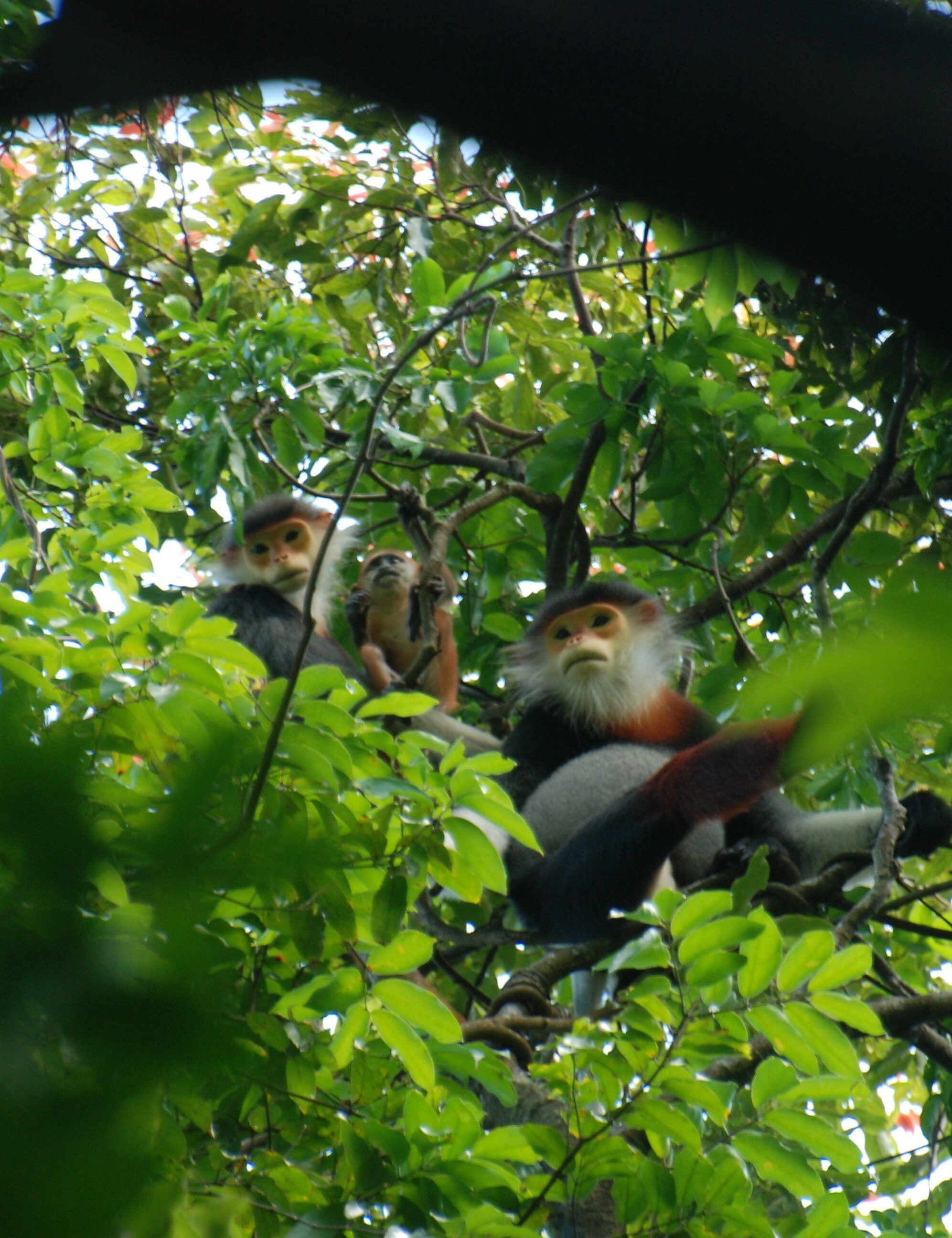Protecting through Conservation, Education and Research
All doucs are entirely restricted to wooded habitats. Populations of doucs have been found in monsoon forests as well as rainforests and their forest homes include: semi evergreen, lowland lower montane and upper montane forests types. All forests are rapidly disappearing in Vietnam, Cambodia and Laos as a direct result of intense and often illegal logging activities which supply hardwoods prized by the building trades for construction of houses, floors and furniture. Also forest land is being converted to agriculture at an increased rate as people move into the forests along with logging operations.
The red shanked Douc Langur has been located in the forests of north/central provinces of Vietnam and central and south eastern forests of Laos. New discoveries have also demonstrated that red shanked doucs are found in north eastern Cambodia. The black shanked douc is found in central and southern provinces of Vietnam and in the eastern and southern forests of Cambodia. Black shanked doucs do not occur in Laos. The grey shanked douc, a new and critically endangered form, has been located in a restricted distribution in central Vietnam.
All doucs are entirely restricted to wooded habitats. Populations of doucs have been found in monsoon forests as well as rainforests and their forest homes include: semi evergreen, lowland lower montane and upper montane forests types. All forests are rapidly disappearing in Vietnam, Cambodia and Laos as a direct result of intense and often illegal logging activities which supply hardwoods prized by the building trades for construction of houses, floors and furniture. Also forest land is being converted to agriculture at an increased rate as people move into the forests along with logging operations.
Much is known about the doucs for example
On the web: Douc Langur Pygathrix Factsheet which covers Taxonomy, Behavior, Conservation and References.
The douc langur: a time for conservation
Lippold LK. 1977. The douc langur: a time for conservation. In: Rainier III) Prince of Monaco, Bourne GH, editors. Primate Conservation. New York: Academic Press. 513-538.
Monitoring female reproductive status in the douc langur Pygathrix nemaeus at San Diego Zoo
Lippold LK. 1981. Monitoring female reproductive status in the douc langur Pygathrix nemaeus at San Diego Zoo. Int. Zoo Yearbook 21:184-187.
Natural history of douc langurs
Lippold LK. 1998. Natural history of douc langurs. In: Jablonski NG, editor. The natural history of the doucs and snub-nosed monkeys. Singapore: World Scientific. p191-206.
Distribution and conservation status of douc langurs in Vietnam
Lippold LK. 1995a. Distribution and conservation status of douc langurs in Vietnam. Asian Primates 4(4):4-6.
Primate conservation in Vietnam
Lippold LK. 1998. Primate conservation in Vietnam. In: Jablonski NG, editor. The natural history of the doucs and snub-nosed monkeys. Singapore: World Scientific. p293-300.
Douc langur variety in the central highlands of Vietnam
Lippold LK, Vu NT. 1995b. Douc langur variety in the central highlands of Vietnam. Asian Primates 5(1-2):6-8.
Doing fieldwork among the doucs in Vietnam
Lippold LK. 1999. Doing fieldwork among the doucs in Vietnam. In: Dolhinow P, Fuentes A, editors. The Non Human Primates. Mountain View Publishing Company. 170-174.
The gray-shanked douc: survey results from Tien Phuoc, Quang Nam, Viet Nam
Lippold LK, Vu NT. 2002. The gray-shanked douc: survey results from Tien Phuoc, Quang Nam, Viet Nam. Asian Prim 8(1-2):3-6.
The time is now: survival of the douc langurs of Son Tra, Vietnam
Lippold LK, Vu NT. 2008. The time is now: survival of the douc langurs of Son Tra, Vietnam. Prim Conservation 23:75-79.

